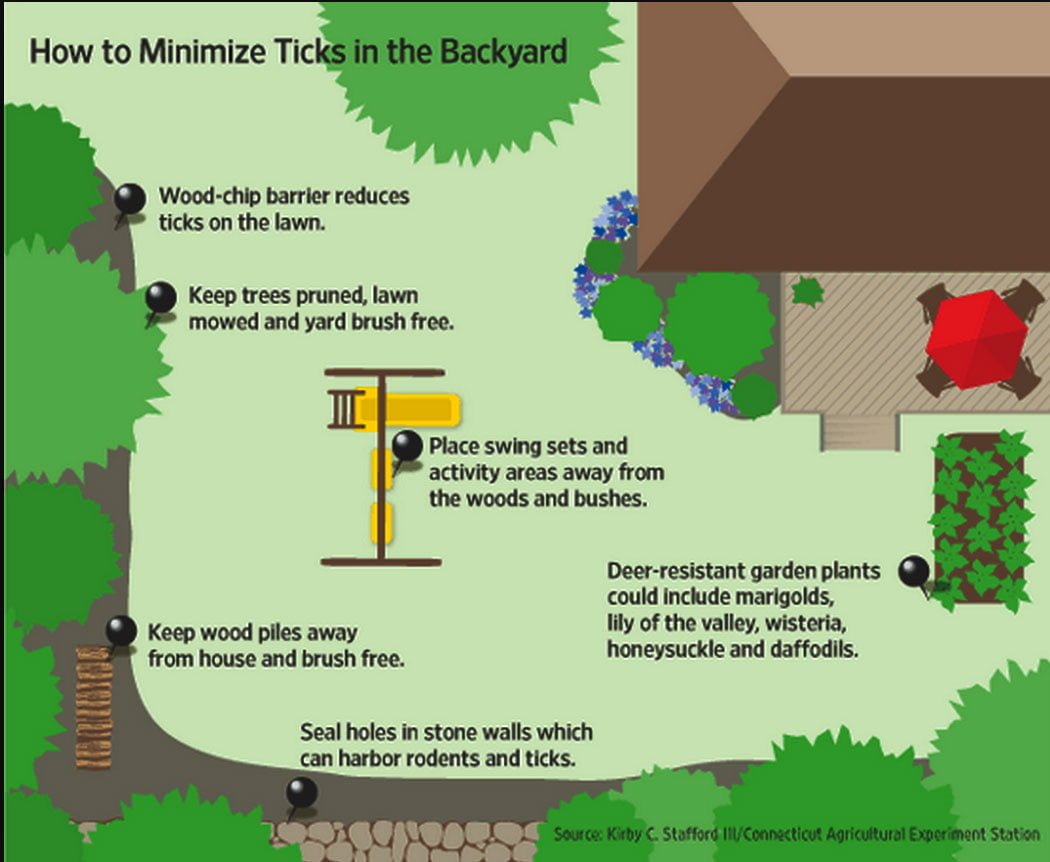Protect Your Family from Lyme’s Disease
Treating properties to help prevent cases of Lyme disease
Red Cedar offers methods of tick control that have been shown to be safe for pets, people, and the environment, and that have also been shown to be effective at killing ticks in people’s yards.
For customers who prefer a green solution to managing tick populations in their landscape, Organic Tick Control treatments are an effective option.
Organic Tick Control treatments
Living in an area with the highest risk of Lyme disease requires us to be proactive. Spring time you run the highest risk of coming in contact with ticks. Organic tick control is the safest way to protect your family. One form of treatment is the use of Cedar oil.
Cedar oil is a natural essential oil that provides a pheromone interruption agent that impairs the insects mental capacity. When combined with ethyl lactate, a raspberry bio-solvent it becomes instrumental in triggering instant erosion and dehydration of the insect’s exo-skeleton and subsequently, the egg and larvae.
For every insect you see, there are 99 more in egg and larvae stage. Exposure to a water solution spiked with cedar oil and ethyl lactate will destroy the egg and larvae stage, breaking the egg layer cycle and eliminating the next generation of insects.
A pesticide designed to kill ticks is called an acaricide. Acaricides can be very effective in reducing tick populations. If properly timed, a single application at the end of May or beginning of June can reduce tick populations by 68-100%.
Use landscaping techniques to minimize & control tick exposure on your property
Ticks that transmit Lyme disease thrive in humid wooded areas. They die quickly in sunny and dry environments. Here are some simple landscaping techniques to help reduce tick populations.
Discourage Rodent Activity

- Discourage rodent activity. Generally, whatever reduces mice reduces infected ticks.
- Clean up and seal stonewalls and small openings around the home.
- Ticks can enter your landscape any number of ways including being carried in by animal hosts such as the white-footed mouse, eastern chipmunk, white-tailed deer, raccoon, opossum, striped skunk, short-tailed shrew, masked shrew, rabbits, and birds.
- Deer are not affected and do not transmit Lyme disease, but are hosts that allow infected ticks to multiply.
- Using deer-resistant plants in your landscapes.
How to Minimize Ticks in the Backyard

- Remove leaf litter, brush and weeds in early spring (March) and early summer (June) to reduce nymphal tick population.
- Keep lawn grass short (less than 3″) to help facilitate dry, hot conditions.
- Use plantings and vegetation that make the environment less suitable for tick survival and for tick hosts.
- Use landscaping techniques to minimize & control tick exposure on your property.
- Adopt hardscape or less water demanding landscaping techniques with gravel pathways and mulches.
- To keep the yard tick-free, use landscaping that deters mice, deer, woodchucks and other tick-carrying rodents.
- Remove tick habitat near the house: leaf piles, shrubs and ground cover.
- Keep grassy and weedy areas trimmed.
- Restrict movement of your pets.
- Keep playground equipment, decks and patios away from yard edges and trees.
- Trim tree branches and shrubs around the lawn edge to let in more sunlight.
- Clear and widen woodland trails to avoid exposure to questing ticks.
- Make a barrier of wood chips around the yard’s perimeter. Ticks won’t cross a barrier of wood chips perhaps because the dry material makes them dry out.
- Whenever possible, stay out of tick-infested areas, grassy pastures, prairies and wooded areas.
- When hiking, keep to the center of trails to minimize contact with adjacent vegetation.
- Do careful tick checks (and bathing, if possible) after time spent in risky zones, like woods and shrubby areas.
- Use repellents (such as DEET) on clothing (including socks and shoes) during prime tick season (May–August).
- Use acaricides (pesticides that kill ticks) like Permanone and Duranon sprayed on clothing (including socks and shoes).
- Consider a pesticide application as a targeted barrier treatment.
Source: Live Science

